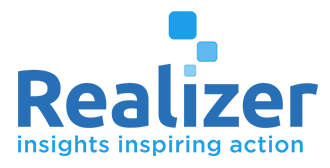Teams and Tribes
- Rob Pyne
- Jun 9, 2022
- 2 min read
We've been tracking 4 organisations as they navigate working remotely, surveying their people every 2 weeks. Here's an insight that might just inspire you to take action.
Our tracking shows how remote working has affected organisations at 3 levels. The individual, the team and the tribe.
We see that individual experience of remote work is highly variable (people rate it anything from 3/10 to 10/10), but on average their appreciation of remote working is declining slightly over time*. Teams are functioning pretty well, getting stuff done. Communication and technology has been sufficient to keep teams productive at dealing with immediate workload. Tribes** are not doing so well. It's difficult for large remote working groups to stay connected, collaborate well, and solve problems effectively.

As a leader we interviewed said, “The relationship with the people I deal with every day is still, strong, but the next layer out – people I used to bump into regularly – has been tricky”.
And the thing is, tribes are important. In his book on tribes, Dave Logan estimates that tribes are “where all the work gets done”.
An individual team of 5-15 people, who often share the same functional expertise, similar background, can get you so far.
But only when you put multiple teams together to make a tribe do you get real impact. Making-a-dent-in-the-world kind of impact
Where teams are bonded by expertise, tribes are bonded by energy - energy for a specific purpose: who are we helping?
If your tribe is suffering in remote work, if your culture seems a bit weaker, then here are 3 things you might do to get the tribe back on track.
First, connect the tribe. Tribes are made of triads – groups of 3 who are deeply connected within the tribe. Encourage people in your tribe to reach out and connect (maybe even go for a real coffee!?) with 2 others from different teams.
Second, connect people to the purpose. In all the urgent tasks to steady your ship, you may have forgotten to focus on who you are helping. Bringing that in to focus can help the tribe find its mojo again.
Third, Prioritise purposeful collaboration. Breaking down the borders between teams (which may have become more siloed over this time). Encourage team leaders to proactively help each other, share resources – for specific projects related to mission critical or purpose-related work.
Right now, tribes need leaders who can connect all their members to each other, and to a bigger purpose. No matter how senior or not-senior you are, your tribe needs you to be a leader.
*A sizeable majority of people do want to keep the option of some remote work though.
**A tribe is a group of 20-150 people connected around a purpose. A team is 4-15 people with shared functional expertise.




Comments